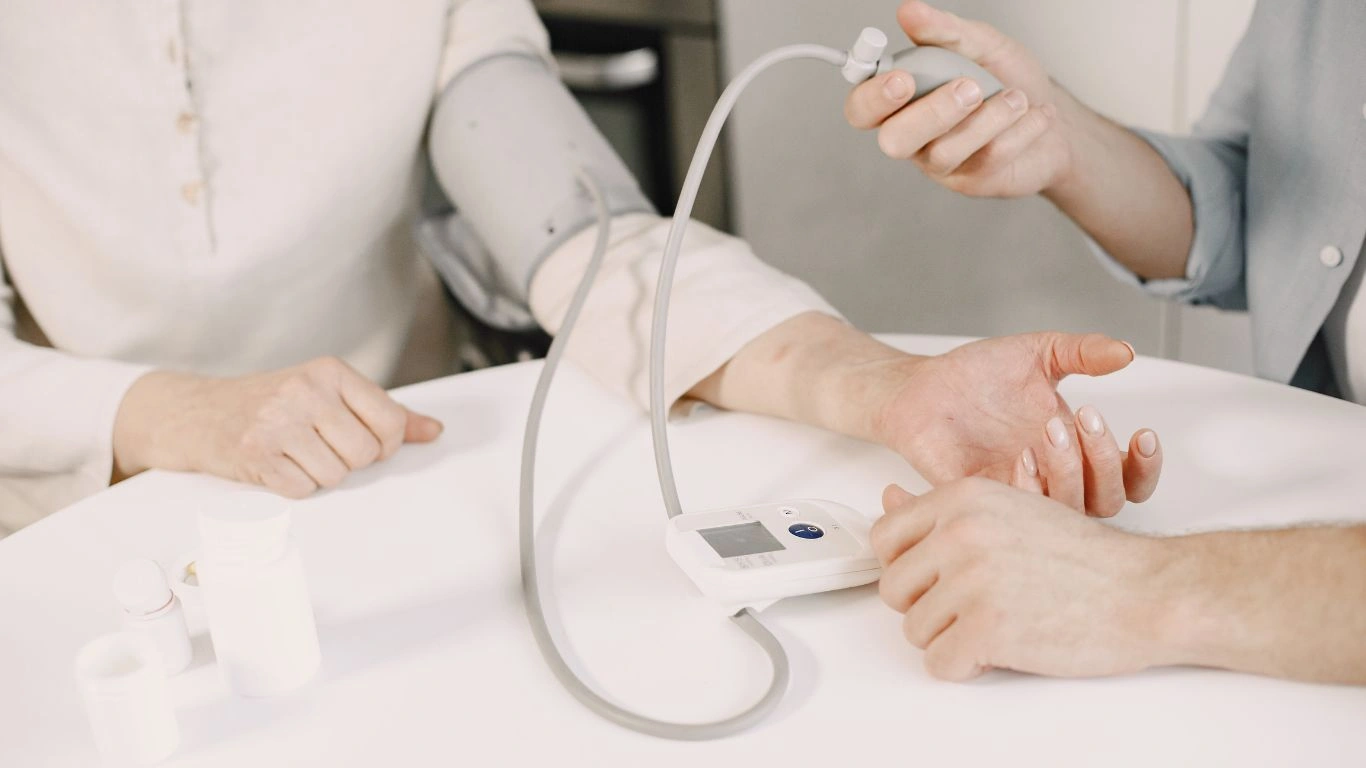Best Blood Pressure-Friendly Plant-Based Proteins for a Healthier Heart
When it comes to managing high blood pressure, diet is a game-changer. One of the smartest shifts I’ve seen work wonders for my patients (and even in my own kitchen) is swapping out animal-based proteins for blood pressure-friendly plant-based protein sources. Not only do they support heart health, but they also bring a ton of nutrients without the excess saturated fats and sodium that can spike blood pressure. Let’s dive into some of the best plant-based protein sources that can help keep your numbers in check while keeping your meals flavorful and satisfying.
Why Plant-Based Protein is a Smart Choice for Blood Pressure

As a hypertension specialist, I’ve seen countless cases where diet plays a crucial role in either improving or worsening blood pressure. The link between animal protein and hypertension isn’t just about the protein itself—it’s often the high levels of saturated fat, cholesterol, and sodium found in processed meats that contribute to the problem. Plant-based proteins, on the other hand, offer a cleaner, heart-friendly alternative.
Research consistently shows that diets rich in plant-based foods help reduce hypertension risk and even lower existing high blood pressure. They’re naturally low in sodium and unhealthy fats while packing a punch with fiber, potassium, and antioxidants—all essential for maintaining healthy blood pressure levels.
Top Blood Pressure-Friendly Plant-Based Protein Sources

Now, let’s get into the good stuff—the actual foods that can fuel your body with high-quality protein while keeping your heart in top shape.
1. Lentils: A Nutrient Powerhouse
Lentils are a personal favorite of mine and a staple recommendation for my patients. They’re packed with protein, fiber, and potassium—three nutrients that work together to promote healthy blood pressure. Plus, they’re incredibly versatile. Whether it’s a warm lentil soup, a cold salad, or even a lentil-based burger, there’s no shortage of ways to enjoy them.
2. Chickpeas: The Ultimate All-Rounder
Chickpeas, also known as garbanzo beans, are another fantastic choice. They offer a hefty dose of protein and fiber while being naturally low in sodium. One of my go-to blood pressure-friendly snacks is homemade hummus—just blend chickpeas with garlic, lemon juice, and olive oil for a heart-healthy dip.
3. Quinoa: A Complete Protein Source
If you’re looking for a complete protein source—meaning it contains all nine essential amino acids—quinoa is a winner. Unlike many other plant-based proteins, quinoa provides a full amino acid profile, making it a perfect addition to any meal. Plus, it’s rich in magnesium, a key mineral that helps relax blood vessels and lower blood pressure.
4. Tofu and Tempeh: Soy-Based Superstars
Soy-based proteins like tofu and tempeh have been extensively studied for their heart-health benefits. They’re not just rich in protein but also contain isoflavones—compounds that have been shown to help reduce blood pressure. Personally, I love marinating tofu with a little garlic and turmeric before grilling it to perfection.
5. Nuts and Seeds: Small but Mighty
Walnuts, almonds, flaxseeds, and chia seeds might be tiny, but they pack a serious nutritional punch. They’re rich in protein, heart-healthy fats, and magnesium—all of which contribute to better blood pressure control. I always keep a small bag of unsalted almonds in my purse for a quick, satisfying snack.
How to Incorporate These Plant-Based Proteins into Your Diet

Switching to a more plant-based diet doesn’t have to be overwhelming. Here are some simple ways to incorporate these protein sources into your meals:
- Swap out meat for lentils or chickpeas in stews and soups.
- Use quinoa instead of white rice for added protein and fiber.
- Add tofu or tempeh to stir-fries for a satisfying, protein-rich meal.
- Snack on a handful of unsalted nuts instead of processed snacks.
- Blend chia seeds into smoothies or sprinkle them over yogurt.
Incorporating these plant-based proteins into your diet is one of the most effective (and delicious) ways to keep your blood pressure in check while enjoying a variety of flavors and textures. The best part? You don’t have to be a vegetarian to benefit—just adding more of these nutrient-dense foods to your meals can make a significant difference.
Easy and Delicious Blood Pressure-Friendly Meal Ideas

Now that we’ve covered some of the best blood pressure-friendly plant-based protein sources, let’s talk about how to put them to good use in your daily meals. One of the biggest challenges my patients face is knowing how to make plant-based proteins exciting and flavorful. Trust me, it’s easier than you think! Here are some simple meal ideas that are both heart-healthy and satisfying.
1. Protein-Packed Breakfast: Chia Seed Pudding
If you’re used to starting your day with a protein-heavy breakfast, switching to plant-based options can feel tricky at first. But one of my favorite go-to breakfasts is a creamy, protein-packed chia seed pudding. Chia seeds are rich in protein, fiber, and omega-3s, making them an excellent choice for maintaining healthy blood pressure.
How to make it:
- Mix 2 tablespoons of chia seeds with ½ cup of almond milk.
- Stir in a touch of honey or maple syrup and a splash of vanilla extract.
- Let it sit in the fridge overnight.
- Top with fresh berries and a sprinkle of crushed nuts for extra protein.
2. Lunch Idea: Mediterranean Chickpea Salad
For lunch, I love something fresh and filling, and this Mediterranean chickpea salad never disappoints. It’s loaded with plant-based protein and heart-healthy ingredients like olive oil, garlic, and lemon juice.
Ingredients:
- 1 can of chickpeas (rinsed and drained)
- 1 cucumber (diced)
- ½ red onion (chopped)
- Cherry tomatoes (halved)
- ¼ cup fresh parsley (chopped)
- 2 tablespoons olive oil
- Juice of 1 lemon
- Salt and pepper to taste
Just toss everything together, let it marinate for about 15 minutes, and enjoy! Pair it with a slice of whole-grain bread or quinoa for an extra boost of protein.
3. Hearty Dinner: Lentil and Quinoa Stuffed Peppers
Stuffed peppers are one of those comforting, satisfying meals that never get old. And when you fill them with a mix of lentils and quinoa, you get a protein-packed, blood pressure-friendly meal that’s both nutritious and delicious.
How to make it:
- Cook ½ cup quinoa and ½ cup lentils separately.
- In a pan, sauté onions, garlic, and diced tomatoes.
- Mix in the cooked quinoa and lentils.
- Stuff the mixture into bell peppers and bake at 375°F for 25-30 minutes.
- Top with a sprinkle of nutritional yeast or chopped fresh herbs.
Common Myths About Plant-Based Proteins and Blood Pressure

Over the years, I’ve heard so many misconceptions about plant-based proteins—some of them coming from well-meaning friends and family! Let’s debunk a few of these myths and set the record straight.
Myth #1: Plant-Based Proteins Are Not Satisfying
One of the biggest concerns people have when switching to plant-based protein sources is that they won’t feel full. But here’s the truth—plant-based proteins often come with fiber, which helps keep you fuller for longer. Unlike processed meats, which can cause blood sugar spikes, whole plant foods provide steady energy throughout the day.
Myth #2: You Can’t Get Enough Protein Without Meat
As a hypertension expert, I often get asked if it’s possible to get enough protein from plants alone. The answer? Absolutely! Foods like quinoa, lentils, tofu, tempeh, and chickpeas provide all the protein your body needs. Plus, they come with additional heart-health benefits that meat simply doesn’t offer.
Myth #3: Plant-Based Proteins Are Bland and Boring
If you’ve ever had a bland tofu dish, I feel your pain. But the key to making plant-based proteins delicious is in the preparation. Marinating, seasoning, and combining them with flavorful ingredients can completely transform their taste. Personally, I love using smoked paprika, garlic, turmeric, and lemon zest to bring my dishes to life.
Tips for Transitioning to a More Plant-Based Diet

Making the switch to more plant-based protein sources doesn’t have to be an all-or-nothing approach. Even small changes can make a big difference in your blood pressure and overall heart health.
Here are some tips to ease into it:
- Start with one meal a day. Try a plant-based breakfast or swap out meat for beans in your lunch.
- Experiment with different cooking methods. Roasting, grilling, and sautéing can bring out new flavors in plant-based proteins.
- Keep it simple. You don’t need fancy recipes—just swapping out meat for lentils, tofu, or quinoa in your favorite meals works.
- Don’t stress about perfection. Even reducing your intake of animal proteins while increasing plant-based foods can lead to significant health benefits.
- Find flavors you love. Use herbs, spices, and natural sauces to make your plant-based meals exciting.
Shifting towards more plant-based protein sources has transformed not only my own meals but also the health of many of my patients. The best part? You don’t have to give up flavor, satisfaction, or variety. With a little creativity in the kitchen, you can enjoy meals that nourish your body and keep your blood pressure in check.
How a Plant-Based Diet Can Improve Blood Pressure Over Time

By now, we’ve covered the best blood pressure-friendly plant-based protein sources, how to incorporate them into meals, and even debunked some common myths. But let’s talk about something even more exciting—how these changes can actually transform your health over time.
I’ve worked with many patients who were initially skeptical about shifting to more plant-based foods. But after just a few weeks of making small, consistent changes, they started noticing real improvements. And the science backs this up—numerous studies have shown that a diet rich in plant-based proteins can help lower blood pressure naturally.
The Science Behind It
So, what makes plant-based proteins so effective for blood pressure control? Here are some key reasons:
- Lower Sodium Content: Unlike processed meats, plant-based foods are naturally low in sodium, which helps prevent blood pressure spikes.
- Rich in Potassium and Magnesium: Foods like lentils, chickpeas, and quinoa provide essential minerals that help relax blood vessels and reduce hypertension.
- High in Fiber: Plant-based proteins come with fiber, which helps regulate cholesterol levels and keeps arteries healthy.
- Reduced Inflammation: Studies suggest that plant-based diets lower overall inflammation, a key factor in heart disease and high blood pressure.
Real-Life Success Stories

Let me share a quick story about one of my patients, Lisa. She had been struggling with hypertension for years and was hesitant to make dietary changes. After we worked together to incorporate more plant-based proteins into her meals—starting with simple swaps like lentils instead of ground beef—she saw her blood pressure drop significantly in just three months.
Another patient, Mark, was a self-proclaimed “meat lover” but agreed to try adding more plant proteins to his diet. He started eating more tofu, quinoa, and chickpeas while reducing his processed meat intake. Six months later, not only had his blood pressure improved, but he also felt more energized and even lost a few pounds.
These stories aren’t unique—countless people have seen similar benefits by making small, sustainable changes to their diet.
Practical Tips to Stick with a Blood Pressure-Friendly Diet
It’s one thing to know what’s good for your health, but actually sticking to it long-term is where most people struggle. Here are some practical tips to make this lifestyle change easier:
1. Plan Your Meals Ahead
Meal planning helps you avoid last-minute unhealthy choices. Spend a few minutes each week planning meals that incorporate plant-based proteins.
2. Keep Your Pantry Stocked
Having essentials like lentils, quinoa, chickpeas, and tofu on hand makes it easier to whip up quick, healthy meals without resorting to processed foods.
3. Experiment with New Recipes
Trying new flavors and cuisines can keep things interesting. Explore plant-based dishes from different cultures—Indian dal, Mediterranean hummus bowls, or Asian-style tofu stir-fries.
4. Listen to Your Body
Pay attention to how you feel as you make dietary changes. Many people find they have more energy, better digestion, and improved overall well-being when incorporating more plant-based proteins.
Final Thoughts
Switching to blood pressure-friendly plant-based protein sources isn’t just about lowering your numbers—it’s about improving your overall health, longevity, and quality of life. You don’t have to go 100% plant-based overnight, but even small changes can make a world of difference.
If you’re just getting started, pick one or two plant-based protein sources you enjoy and find simple ways to incorporate them into your meals. Over time, you’ll find that eating this way feels natural, satisfying, and—most importantly—beneficial to your heart health.
References
Disclaimer
The information provided in this article is for educational purposes only and should not be considered medical advice. Always consult with a healthcare professional before making any significant dietary or lifestyle changes, especially if you have existing health conditions.

Dr. Gwenna Aazee is a board-certified Internal Medicine Physician with a special focus on hypertension management, chronic disease prevention, and patient education. With years of experience in both clinical practice and medical writing, she’s passionate about turning evidence-based medicine into accessible, actionable advice. Through her work at Healthusias.com, Dr. Aazee empowers readers to take charge of their health with confidence and clarity. Off the clock, she enjoys deep dives into nutrition research, long walks with her rescue pup, and simplifying medical jargon one article at a time.






